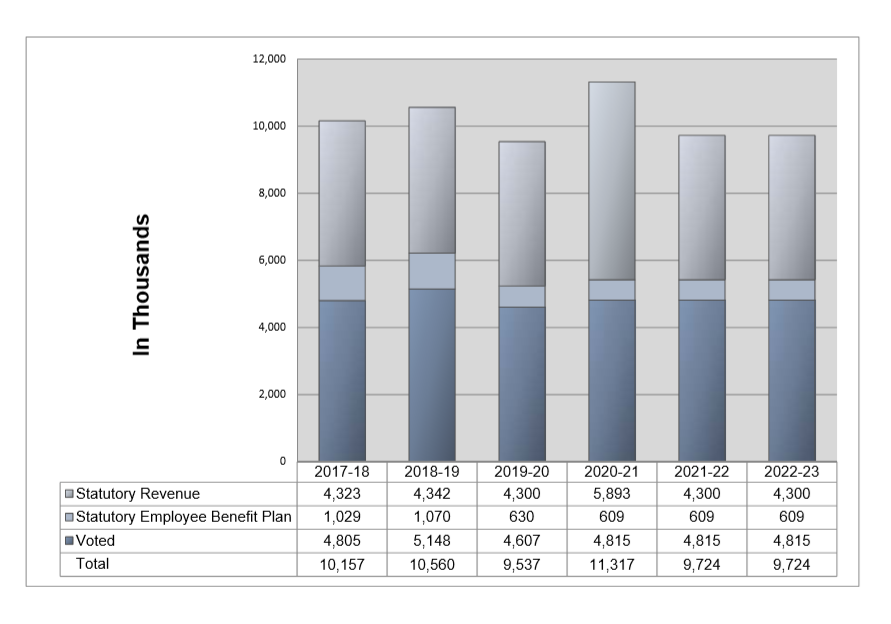For fiscal year 2020-21, the Canadian Centre for Occupational Health and Safety (CCOHS) will focus its efforts on addressing the three strategic priorities in the sectors and on the issues identified in the strategic plan: providing services, information and solutions that are easily accessible to employees and employers alike; through facilitation of collaborative initiatives utilize knowledge outcomes for the benefit of Canadians and workers throughout Canada; and by providing a National repository of key occupational health and safety knowledge, standards, statistics, and information tools that improves dissemination of occupational health and safety related information.
Priority 2: Demonstrate national occupational health and safety leadership on emerging occupational health and safety issues, including in priority sectors.
CCOHS will seek and facilitate collaborative initiatives with labour, employers, and government on emerging occupational health and safety issues and for priority sectors. The knowledge outcomes will be utilized for the benefit of Canadians and workers throughout Canada.
CCOHS will partner with like-minded organizations, unions, and employers to deliver tools, services and solutions that meet the health and safety needs of small and medium-sized businesses; Indigenous enterprises; and workers at higher risk. Those workers at higher risk include temporary foreign/migrant workers; newcomers; self-employed; young, new and aging workers; and those who are disabled. CCOHS will focus prevention efforts to address hazards in priority sectors including healthcare, construction, and fishing and agriculture.
Through our educational, outreach and communications initiatives, CCOHS will continue to increase awareness of current health and safety issues such as mental health, prevention of workplace impairment and harassment and violence and occupational disease. CCOHS will also respond to emerging issues such as the changing nature of work and incorporating gender analysis in our occupational health and safety initiatives, to ensure the needs of all Canadians are met.
Mental health
CCOHS will continue to address workplace mental health by providing reliable and credible mental health information, tools, education, and resources to workers and employers in Canada. CCOHS will facilitate workshops and presentations in various regions in Canada as well as develop tool kits to help workplaces incorporate psychological health and safety into their own programs, particularly in higher risk sectors, such as farming and healthcare. The increased usage of resources from e-courses, tools, web portals, workshops, and presentations will provide practical guidance for workplaces to affect positive change as well as extend reach and impact to Canadians.
Harassment and violence
Prevention of harassment and violence remain important issues facing Canadian workplaces. CCOHS will help workplaces move from awareness to action by offering practical workshops across Canada and with information on actionable ways to prevent and address complaints and unacceptable behaviour. CCOHS will continue its partnership with the Government of Canada on a national multi-faceted social media campaign to promote culture change around workplace harassment and violence, stressing the importance of developing policies and programs to prevent violence and harassment, educating the workforce about knowing how to respond, and reporting incidents whether witnessed or experienced. This will drive visits to CCOHS’ violence and harassment resource page, and e-courses, to increase CCOHS’ reach and impact. CCOHS will assist stake¬holders to better understand and respond effectively to federal workplace sexual harassment and violence legislation.
Occupational disease
CCOHS has identified occupational disease as a prevention priority for occupational health and safety in Canada. Through our various communications channels and formats CCOHS will promote educational messages about the hazards and risks of various occupational diseases and how to prevent harmful exposures to help reduce related illnesses and fatalities. Through partnerships CCOHS will endeavor to expand the reach and usage of helpful tools (for example silica exposure) that have been developed regionally, to a national audience, for the benefit of all Canadians.
Impairment in the workplace
CCOHS will continue to stay at the forefront of the workplace impairment issue and provide practical advice and guidance through various informational formats and materials (podcasts, articles, social media posts). This will help workplaces to navigate the issue of impairment, respect their workers’ rights, and improve workplace practices with appropriate policies and programs. CCOHS will accept speaking engagements and media interviews with national and industry publications to raise awareness of impairment as a hazard and promote helpful resources to the public that are easily accessible.
CCOHS believes that equipping people with information, tools and solutions they need to address the hazards in their workplaces, work safely, and create healthy and safe workplaces, can lead to reduced work-related illness, injuries and death in Canada.
Priority 3: Serve as a national repository of workplace health and safety information.
Through collaborations with organizations, jurisdictions and researchers, CCOHS will provide Canadians with a national repository of key occupational health and safety knowledge, research, standards, statistics, and information tools that improve dissemination of occupational health and safety related information. CCOHS will provide resource and informational collections related to priority issues such as occupational disease, healthcare, mental health and gender and work.
CCOHS will continue to partner with organizations and agencies to expand the centralized, online repository of occupational disease topics and related prevention resources that will serve as a trusted source for information on key occupational diseases and hazardous exposures, for people working in Canada.
CCOHS will continue to develop the capability to capture and the facility to store and share relevant, credible research, tools and information and make all easily accessible to Canadians and beyond. This single point of access to information that can be used to shape programs and policy will lead to improvements in the workplace and workplace practices.
Gender-based analysis plus
To help achieve greater gender balance in the field of occupational health and safety, CCOHS plans to launch a new scholarship program to encourage women to pursue post secondary education in occupational health and safety programs.
CCOHS will continue to use imagery in social media campaigns, courses, and other public facing outputs, that is inclusive and reflects the diversity of the people of Canada.
CCOHS will promote and monitor the usage of the CCOHS Gender, Work and Health web portal. We must understand how gender and sex influence work and health and integrate gender considerations into occupational safety and health activities. The portal provides policy makers and workplaces with the most current, relevant research and tools to do this.
CCOHS will continue to develop a framework for an inclusion and diversity program which will include: a commitment for diversity recruitment strategies; the development of activities to increase the social and cultural diversity in the workplace; leadership and organizational diversity and inclusion training with an approach that promotes gender equality.
Caregiving remains highly gendered in Canada, with the majority of the responsibility residing with women. Workplaces that accommodate and support carer-workers who are balancing personal and work demands report such benefits as improved health, retention, satisfaction, levels of production, attendance and morale of its workers.
CCOHS will continue its knowledge translation work to support the national Standard for carer-workers and highlight the benefits of being a supportive workplace.
Experimentation
Due to the micro size of our department CCOHS does not have the capacity or resources to undertake this initiative
Key risk(s)
CCOHS relies heavily on cost recovery programs and contributions from partners to supplement its parliamentary appropriations and cover fixed costs. The CCOHS funding model is based upon a target of 50% of its operating budget being generated through cost recovery. Therefore, CCOHS’ products and services must be continually updated to be marketable.
CCOHS also works very closely with various Government and non-profit partners. Changes to its partners’ funding can have a direct impact on revenues and CCOHS’ ability to deliver its products and services to workers in Canada. CCOHS is proactively managing this risk by improving its cost recovery program.
Continuous improvement in technology continues to change the landscape for CCOHS. CCOHS delivers the majority of its products and services to workers in Canada through electronic delivery and must stay up to date on new technology as traditional delivery methods for its content are unsustainable and out-dated. CCOHS has responded by expanding its on-line resources to include more specialized web portals, e-learning programs, webinars, podcasts, Facebook and Twitter promotion and on-line discussion groups. CCOHS continues to develop mobile apps to help workers assess hazards and risks. These channels are key to supporting CCOHS’ priority to expand its reach and impact of workers in Canada on a daily basis. CCOHS must also ensure that it is adequately protected against increasing threat from unauthorized exploitation of systems, networks and technologies. Such threats can have significant impact to CCOHS’ operations and ability to safely conduct business transactions. CCOHS maintains sufficient levels of investment in technology required to support continuous improvements in its on-line resource delivery channels and to protect against cyber-security risks.
To continue to provide relevant leadership training and support to workers in Canada on emerging occupational health and safety issues CCOHS relies heavily on maintaining a high level of professional development of its staff. Lack of properly directed investment in talent management will have a significant impact on CCOHS’ ability to perform optimally in the research and delivery of relevant products and services on topics which may quickly become areas of concern for workers both in Canada and globally.
Planned results for National Occupational Health and Safety Resource
| Departmental Results |
Departmental Result Indicators |
Target |
Date to achieve target |
2016–17 actual results |
2017–18 actual results |
2018–19 actual results |
| Canadians and workers in Canada can easily access the Canadian Centre for Occupational Health and Safety’s occupational health and safety information and services. |
Number of learning activities and opportunities on emerging occupational health and safety issues and for priority sectors.
|
Between 100 and 140 learning events on emerging occupational health and safety issues and for priority sectors. |
March 2021 |
* Not available |
* Not available |
* Not available |
| Number of social media impressions on emerging occupational health and safety issues and for priority sectors, where CCOHS is referenced as the source.
|
Up to 2,500,000 social media impressions |
March 2021 |
1,594,461 |
1,906,795 |
2,246,613 |
| Percentage of users of CCOHS’ website who indicated that information was easy to access |
Between 65% and 75% |
March 2021 |
* Not available |
* Not available |
84.7% |
| Provide Canadians and workers in Canada with a National repository of key occupational health and safety knowledge, standards, statistics, and information tools that improves dissemination of occupational health and safety related information. |
Number of collections of occupational health and safety related records made available to Canadians and workers in Canada through repository tools. |
Between 1 to 3 new collections of records per year |
March 2021 |
* Not available |
* Not available |
* Not available |
| Number of new tools made available to workers in Canada which address emerging occupational health and safety issues and for priority sectors.
|
Between 20 and 30 new tools per year |
March 2021 |
* Not available |
* Not available |
* Not available |
| Number of times users accessed CCOHS’ free online repository of occupational health and safety information or used its person-to-person support services. |
Between 1,900,000 to 2,300,000 times |
March 2021 |
* Not available |
* Not available |
* Not available |
| Through the facilitation of collaborative initiatives with labour, employers and/or government on emerging occupational health and safety issues and for priority sectors, knowledge outcomes are utilized for the benefit of Canadians and workers throughout Canada.
|
Number of new collaborative initiatives with a tripartite perspective on emerging occupational health and safety issues and for priority sectors, where knowledge outcomes are serviceable across Canada. |
Up to 6 new initiatives per year |
March 2021 |
* Not available |
* Not available |
* Not available |
* Beginning in fiscal year 2020-2021 the Canadian Centre for Occupational Health and Safety (CCOHS) implemented new departmental result / indicators to align with the expansion of CCOHS’ strategic initiatives as a national leader on emerging occupational health and safety issues.
Financial, human resources and performance information for the Canadian Centre for Occupational Health and Safety’s program inventory is available in the GC
InfoBase.
Planned budgetary financial resources for National Occupational Health and Safety Resource
2020–21 budgetary
spending (as indicated
in Main Estimates) |
2020–21
planned spending |
2021–22
planned Spending |
2022–23
planned Spending |
| 7,129,798 |
7,129,798 |
6,126,028 |
6,126,028 |
Financial, human resources and performance information for the Canadian Centre for Occupational Health and Safety’s program inventory is available in the GC InfoBase.
Planned spending for fiscal year 2020-21 represents the use of funding sources from Main Estimates,
Canadian Centre for Occupational Health and Safety (CCOHS) Respendable / Reinvestment Authorities, pursuant to
section 6(1)(g) of the Canadian Centre for Occupational Health and Safety Act.
Planned human resources for National Occupational Health and Safety Resource
2020–21
planned full-time equivalents
|
2021–22
planned full-time equivalents
|
2022–23
planned full-time equivalents
|
| 71 |
71 |
71 |
Financial, human resources and performance information for the Canadian Centre for Occupational Health and Safety’s program inventory is available in the
GC InfoBase.




